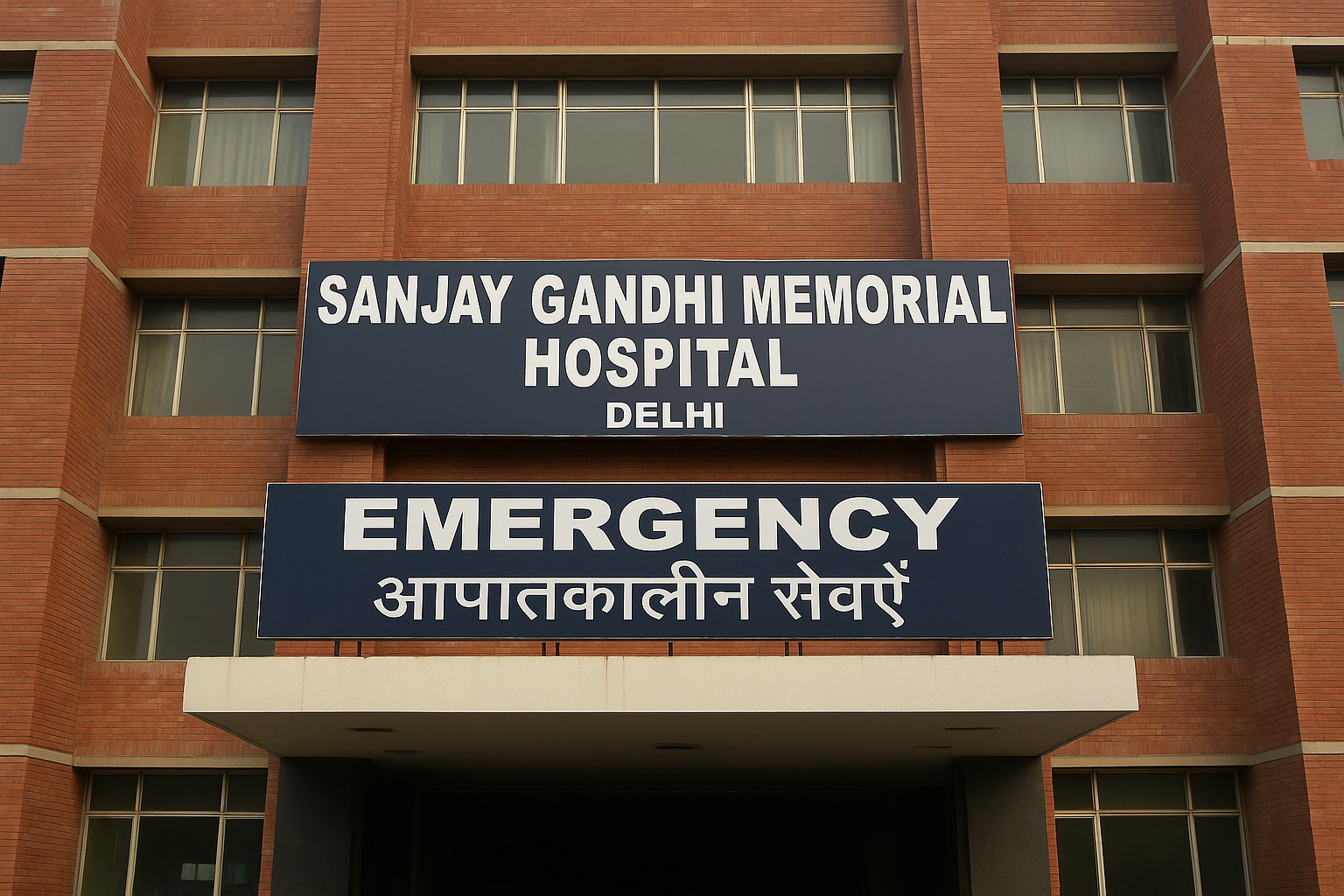Delhi’s healthcare system is set to get a major boost as 17 government-run health facilities across the city are now earmarked for modernization. The Delhi Public Works Department (PWD), in coordination with the Health Department, has floated tenders to initiate the upgrading process, aiming to enhance infrastructure, integrate digital health systems, and improve overall patient experience in government health centres.
What’s Changing? A Push for Modern, Digitally Equipped Health Centres
The transformation is part of the broader effort to strengthen Delhi’s primary and secondary healthcare infrastructure. Most of the facilities selected for this phase are Primary Urban Health Centres (PUHCs) and Delhi Government Dispensaries (DGDs) that serve densely populated areas across the capital.
According to the official tender details, the upgrade involves:
- Construction and renovation of buildings
- Structural strengthening of aging health centres
- Introduction of climate-responsive and green design features
- Creation of digital patient data and queue management systems
- Integration with real-time dashboards and telemedicine-ready spaces
PWD sources confirmed that the new buildings will be G+3 structures, each designed to include waiting areas, doctor chambers, diagnostic labs, medicine counters, and rooftop solar infrastructure. They will also incorporate disabled-friendly access, fire safety, and electronic health record (EHR) readiness.
Areas Identified for Health Centre Upgrades
The 17 health centres selected are spread across various districts including East Delhi, South West Delhi, Central Delhi, and North East Delhi. These centres were shortlisted based on footfall, building age, lack of existing diagnostic services, and local population density.
Some key locations where facilities will be revamped include:
- Gokalpuri
- Karawal Nagar
- Jahangirpuri
- Khichripur
- Dabri
- Zafrabad
- Geeta Colony
PWD is also exploring adding rooftop solar panels, rainwater harvesting, and e-waste management systems as part of Delhi’s climate-conscious health infrastructure roadmap.
Why This Matters: Strengthening Preventive and Primary Care
This move reflects Delhi’s shift towards “localised and preventive healthcare”, rather than overloading tertiary hospitals with general ailments. The revamped PUHCs are expected to handle:
- General outpatient services
- Immunization programs
- Maternal and child care
- Diagnostics including X-rays, lab tests
- Chronic disease management (e.g. diabetes, hypertension)
Officials said each of these revamped centres could reduce dependency on bigger hospitals like LNJP or GTB by absorbing 60–70% of low-risk outpatient footfall locally.
Tech Upgrades: From Queue Management to Digital Dashboards
The tenders specifically mention the inclusion of:
- Electronic Queue Management Systems (EQMS) to streamline patient flow
- Digital Display Boards for real-time updates on doctor availability
- Online OPD Booking Integration with Delhi government’s health app
- CCTV Surveillance for internal monitoring
- Biometric attendance systems for staff accountability
These upgrades are being aligned with the Delhi government’s e-Health roadmap that aims to digitize all patient records under a single health ID, linked to the Ayushman Bharat Digital Mission (ABDM).
Real Use Case: How a Revamped PUHC Could Change Patient Experience
Take the example of Meena Devi, a 62-year-old resident of Gokalpuri. She visits the nearby dispensary twice a month for blood pressure monitoring. In its current state, the clinic has only one nurse, no diagnostic lab, and long waiting hours. After the upgrade, her experience will likely involve:
- Booking her OPD slot online via the Delhi Health App
- Getting her vitals checked at a self-service kiosk
- Visiting the diagnostic lab within the same facility
- Receiving e-prescriptions directly to her phone
- Collecting medicines from a token-based pharmacy counter
This would reduce her visit time from 2 hours to under 40 minutes, and ensure continuity of care through digitized health history.
Timeline and Budget
PWD officials have confirmed that work is expected to begin by October 2025, after final contractor selection in September. The estimated cost per health centre is ₹8–10 crore, depending on the size of the land parcel and local requirements.
Tenders floated include both design-build contracts and long-term maintenance clauses, ensuring that quality and upkeep are not compromised.
Alignment with Delhi’s Health Vision 2030
The revamp plan aligns with Delhi’s broader healthcare blueprint, which includes:
- Building 100+ Mohalla Clinics in underserved zones
- Expanding hospital beds by 10,000+ across public hospitals
- Rolling out Delhi Government Health Card with EHR access
- Boosting community-based mental health services
Senior officials stated that the upgraded health centres will serve as “neighbourhood wellness hubs” that combine allopathic care, counselling, diagnostics, and even AYUSH services under one roof.
FAQs
Which hospitals in Delhi are being upgraded under this new plan?
A total of 17 hospitals are set for modernization, including Deep Chand Bandhu, Dr. Baba Saheb Ambedkar, Dada Dev, and SGMH. These span across North, South, East, and West Delhi.
What is the total budget allocated for this hospital upgrade program?
The Delhi government has allocated approximately ₹2,200 crore for this initiative, covering construction, equipment, and digital system integration.
Will these hospitals have more beds after redevelopment?
Yes, several hospitals will significantly increase capacity. For instance, Sanjay Gandhi Memorial Hospital will expand from 300 to 650 beds, while others like Dada Dev will add maternal care wings.
How will this impact patients in West, North, and South Delhi?
These zones will see improved access to emergency and specialty care, especially in localities like Dabri, Najafgarh, Ashok Vihar, and Jahangirpuri where patient load often overwhelms existing facilities.
When will the upgraded hospitals be operational?
The construction and implementation phase is expected to span 18 to 36 months, depending on the specific site and project complexity.
Are the upgrades part of Kejriwal’s broader healthcare model?
Yes. The project aligns with the CM’s long-term plan to position Delhi as a global healthcare hub offering free and reliable public services.
Will new departments or technologies be introduced?
Yes, the upgrade includes digital record systems (HIMS), modern ICUs, green infrastructure, and diagnostic automation to match private hospital benchmarks.
How will it improve services for women and children?
Dedicated mother-and-child units, neonatal ICUs, and improved maternity facilities will be a focus at Dada Dev and SGMH hospitals.
Can I access these upgraded hospitals for free as a Delhi resident?
Yes. All services at these government hospitals will remain free of cost, continuing Delhi’s model of universal health access.
Where can I follow updates on the project?
Updates are expected through Delhi Health Department’s website, press briefings, and local area hospital notice boards once execution begins.

